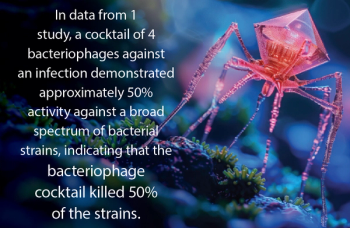
WHO’s World Hand Hygiene Day for Infection Preventionists: Unite for Safety: Clean Your Hands
PDI’s director of clinical affairs speaks with ICT® about the annual focus on the most fundamental way to protect patients and health care workers alike.
May 5 is World Health Organization’s (WHO’s) annual World Hand Hygiene Day and its slogan: “Unite for safety: Clean your hands.” On the WHO’s
To discuss the meaning of the day and what it means for infection preventionists, Infection Control Today® (ICT®) spoke with Debra A. Hagberg, MT(ASCP), CIC, director of clinical affairs for
Infection Control Today®: Why is PDI highlighting World Hand Hygiene Day?
Debra A. Hagberg, MT(ASCP), CIC:
When an organization or a community makes a concerted effort to promote hand hygiene and infection prevention in general, this will result in improved patient, consumer, and employee safety and reduced overall risk of infection. The theme for World Hand Hygiene Day 2022 is “Unite for Safety: clean your hands.” PDI is in a great position to provide support and encouragement on cleaning hands at the right times, the right frequency and with the right products for this endeavor. We are ready to unite and be the difference!
ICT®: What are the key 5 hand hygiene tips, and would you please expand on them?
DB: Within health care, we promote the 5 Key Moments for Hand Hygiene. These moments are evidence-based and logical and, therefore, should be easy to follow.
- Moment 1: Before touching a patient
- You should always perform hand hygiene before touching a patient. The reason this is important is because the environment is contaminated with various microorganisms. Hands can be the source of transmission for those organisms which can include potential pathogens.
- This moment will mainly prevent colonization of the patient with health care-associated microorganisms, resulting from the transfer of organisms from the environment to health care worker (HCW) hands to the patient through unclean hands. Typically, you will see HCWs perform hand hygiene upon entering the patient room.
- Moment 2: Before a clean/aseptic procedure
- You should always clean your hands immediately before performing a clean/aseptic procedure. This is to protect the patient against organisms, including the patient's own bacterial flora, from entering his/her body. The HCW may engage in a clean/aseptic procedure at the bedside. Examples of the procedures include vascular access insertion, IV-line care/maintenance, or performing respiratory or wound care. The use of gloves is standard for these procedures; however, hand hygiene is required before donning gloves because gloves alone may not entirely prevent contamination.
- Moment 3: After body fluid exposure risk
- Perform hand hygiene immediately after an exposure risk to blood/body fluids and after glove removal.
- This moment protects the HCW, the patient and the health-care environment from potentially harmful patient germs. After a task associated with a risk to body fluids, e.g., after accessing a critical site with body fluid exposure risk, hand hygiene is required and must take place before any next hand-to-surface exposure. This moment serves several purposes. It reduces the risk of colonization or infection of HCWs with infectious agents, it reduces the risk of a transmission of microorganisms from a “colonized or infected” to a “clean” body site on the same patient, and it prevents contamination of the environment within the patient zone.
- Moment 4: After touching a patient
- Clean your hands after touching a patient and her/his immediate surroundings, upon leaving the patient’s side. When leaving the patient zone after care and before touching an object in the area outside the patient zone, hand hygiene minimizes the risk of transferring potential health care pathogens to the environment and reduces contamination of HCWs’ hands with the flora from the patient.
- Moment 5. After touching patient surroundings
- After touching any object or furniture in the patient’s immediate surroundings, upon leaving (even if the patient has not been touched), it is good practice to perform hand hygiene again. This typically extends to objects contaminated by the patient’s flora that are extracted from the patient zone to be decontaminated or discarded or due to other individuals that may have contaminated surfaces during visits. Because hand exposure to patient objects, but without physical contact with the patients, is associated with hand contamination, hand hygiene is still required.
ICT®: What is the takeaway for infection preventionists?
DB: A key takeaway for infection preventionists is that there is not one strategy for hand hygiene to fit all institutions to be successful. Hand hygiene is a simple yet complex infection prevention measure to implement. The WHO Multimodal Hand Hygiene Improvement Strategy is a great resource for infection preventionists to access. It consists of a guide to implementation and a range of tools designed to facilitate implementation of each component. At its core is a multimodal strategy consisting of 5 implementation steps:
- Step 1 is to ensure the preparedness of the institution. This includes getting the necessary resources in place and the key leadership to head the program, including a coordinator and his/her assistant. Proper planning to map out a clear strategy for the entire program is required.
- Step 2 is to conduct baseline evaluation of hand hygiene within the organization including current practice, perception, knowledge, and infrastructure.
- Step 3 is to implement the improvement program:
- Ensure availability of an alcohol-based hand sanitizer at the point of care for HCWs, patients, and visitors. Items to consider is the acceptance of the sanitizer by the HCWs and the best format for sanitizer for the location (i.e., hand sanitizing wipes, gels, rubs)
- Staff, patient, and visitor education and training
- Well-publicized events involving endorsement of commitment from leaders and individual HCWs
- Step 4 is follow-up with an evaluation to assess the effectiveness of the program
- Step 5 is to develop an ongoing action plan and review cycle to incorporate hand hygiene as an integral part of the organization’s culture. This is important because behavior can be difficult to change and may involve factors not planned for up front. Also, a health care environment is dynamic. Changes in physical structure may occur and impact the original plan. Keeping in constant “touch,” pun intended, with your hand hygiene program is integral for continued success.
ICT®: Do you have anything else you would like to add?
DB: After 30 years of being an infection preventionist, it still surprises me to see the low level of hand hygiene compliance within health care. As a former clinical lab microbiologist, I do think about the germs that are unseen and the chain of infection daily. My dry hands from constant washing are a true testament to that. Hand hygiene does not always get the notoriety that it deserves. The connection that a simple infraction could lead to a nasty outbreak within an institution leading to serious infections or deaths is not always in the forefront of our HCWs minds. It does take involvement of everyone within health care to assume accountability of supporting a hand hygiene program. Programs that involve a multidisciplinary team and that celebrate sustained high hand hygiene levels through a rigorous monitoring program are the programs to benchmark with.
With celebrating annual World Hand Hygiene Day, it is an opportunity for health care organizations to pause and evaluate hand hygiene within their institution and to re-commit to patient and employee safety through the aspect of hand hygiene.
Newsletter
Stay prepared and protected with Infection Control Today's newsletter, delivering essential updates, best practices, and expert insights for infection preventionists.






